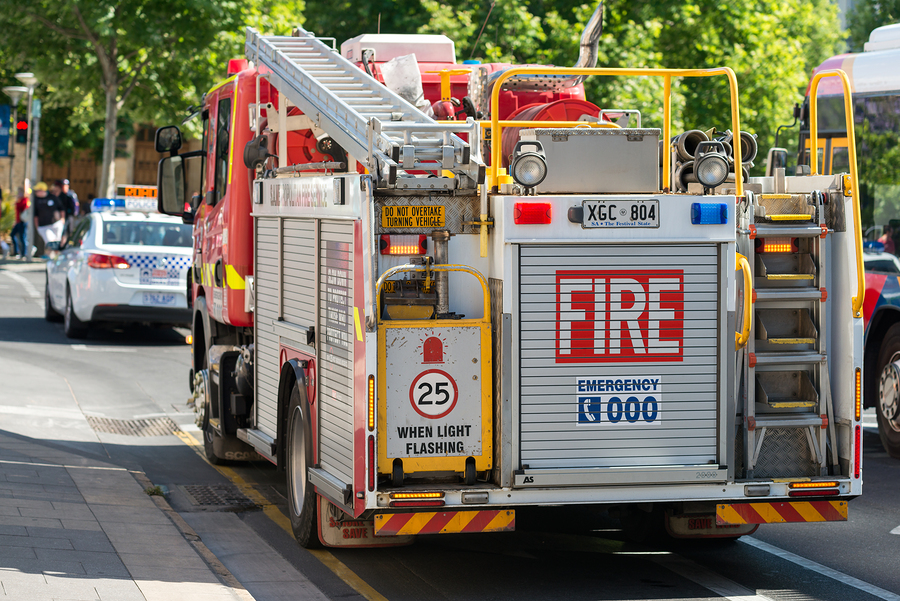Life safety is one of the most important elements of managing your apartment building. You want to be sure that you take every step necessary to protect the people who will live in your building–not only to keep your building up to code, but to protect your tenants as much as possible.
During your due diligence period before you buy the complex and after that, when you’re managing your building, make sure you aren’t missing key safety elements–and keep in mind that you may need to add or implement systems to get the building in compliance and up to code.
1. Plan ahead
When you’re considering buying an apartment building, it’s critical that you do your due diligence on compliance and code standards. Sometimes, getting the building up to code can be costly–and “I didn’t know” won’t help you with the legal fines if there’s an inspection or an accident.
New statutory provisions often require changes to existing buildings such as the installation of:
- automatic fire sprinkler systems or fire alarm systems,
- energy compliant conservation systems like Denver’s Green Roof initiative,
- or even properly illuminated exit signs.
These will vary widely by city and state. Plan ahead for any modifications that will need to be made to the building before you buy it, and make sure you keep an eye on any code changes over the years so that you can keep your building as safe as possible.
2. Consider adding the latest safety features
If you’re purchasing a high-end property, you may want to go above and beyond for your residents. Consider, for example, items like stovetop firestop, or the latest advances in smoke detectors and carbon monoxide detectors, energy saving lighting for exits, smart doorbells and locks, and other technology that will offer clear advantages to your residents.
Many residents choose their complex based on the safety features it offers. Make sure you know what yours can bring to the table–and remember that going above and beyond can help you offer more to your residents.
3. Check fire pits and barbecues
Take a look around the property. Does it include fire pits and barbecues that can be used by the residents? While residents can bring in their own items, leaving them responsible for maintaining them, if you offer these additions to your community, keeping up with them falls on you.
Make sure that fire pits and barbecues are properly stored each year, especially when the cold winter months approach. Create safety standards for using them and how they must be cleaned afterwards. Institute regular cleaning and, if needed, maintenance to ensure that these items remain up and running the way they’re supposed to.
4. Examine storage
Are chemicals and flammable liquids stored property? From stored paint to pest control chemicals, they must be stored properly in order to ensure resident safety. Make sure that you check local codes to ensure that you know how these items are supposed to be stored and that you aren’t accidentally creating a hazard for your residents.
Also, dispose of old or unused chemicals regularly so that they aren’t sitting around your property, causing a problem.
5. Inspect fire safety equipment
Fire safety equipment, from smoke alarms to sprinkler systems, must be properly installed in order to do anyone any good. Don’t take possession of a building without examining its fire safety system! If needed, have an inspector come in just to check it out. You may discover that this simple step helps save you a lot of time and effort in the future.
6. Look for identifying information
You know the neighborhood and how your units are labeled, but others might not. Check that your property address is clearly visible from all entrances so that if there’s an emergency, first responders can quickly find your property.
Look at your rental units, too. They should all have clearly-displayed numbers or identifiers. Imagine it from the perspective of a first responder–and keep in mind that the longer it takes to locate a specific unit within your property, the harder it is to get residents the help they need in an emergency.
7. Check your exits
When you enter a new building, you’re often instructed to check the nearest exits. As a property owner, you need to check all of the exists. Does every renter have the ability to quickly and safely exit the property in an emergency? If there’s a fire, how will they get out?
Exits should always be clear and unblocked–and if they are blocked by tenants, you need a policy that will swiftly correct the problem. You should also check your exit lighting to ensure that residents can see clearly if they must exit fast in an emergency scenario.
8. Design your safety policies
Take a look at the apartment complex’s existing safety policies. Does it include things like policies and procedures for emergencies? Who is responsible for dealing with first responders? Who should contact you in the event of an emergency? What kinds of emergencies require your presence?
You may also want to design a plan that includes fire drills to help encourage residents, especially those with small children, to learn how to exit the building safely in an emergency.
You know that you need to be proactive about keeping your apartment residents safe–and now, you’re in the ideal position to learn more about how to do it. Do you want more help embarking on the journey of multifamily investment properties? Contact us today to learn how we can help you get started.
Learn more:
Inexpensive Fixes for Life Safety Issues at Your Rental Properties
10 Brilliant Apartment Management Tips
Multifamily Property Owners – Don’t Skip the Inspections!
Latest posts by Theresa Bradley-Banta (see all)
- Multifamily Common Areas Maintenance & Management Tips - March 31, 2020
- 8 Tenant Gift Ideas That Will Boost Your Bottom Line - November 11, 2019
- Need a Package Delivery System at Your Multifamily Rental Property? - October 28, 2019



